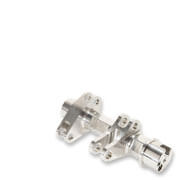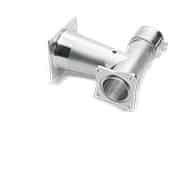
How to choose the right Tracking Technology within the aviation industry?
Martin Lahninger, 08.02.2021
For companies in the aviation industry, the efficient handling of logistical tasks is playing an increasingly important role in order to cope with the growing economic dynamism and the steadily increasing customer requirements. A frequently discussed possibility for overcoming these challenges are localization technologies, so-called tracking technologies.
These technologies can be used to increase the transparency of the material flow. With the advancing digitalization in the sense of Industry 4.0 and the resulting seemingly endless number of different technologies, it is becoming more and more difficult for companies to select a system that meets their company-specific requirements.
The technology of asset tracking and its applications within the industry have rapidly evolved in the past two decades. For the outdoor tracking of assets, GPS is a relevant and reliable technology. However, GPS is not able to track objects indoors. In order to be able to find objects in a huge warehouse or production line, relatively new tracking technologies based on Radio Frequency Identification (RFID), WLAN, Bluetooth Low Energy (BLE) or Ultra-Wide Band (UWB) were developed, which can set up an indoor tracking system. But which technology should be chosen for a specific application?
Giving an answer to this question was the aim of the master thesis of one of our student trainees. A generally applicable model should be developed, with the help of which decision-makers are able to determine a target-oriented technology for the specific requirements from a technical and economic point of view. Care should be taken not to impose any restrictions on possible technologies, the system boundaries, or the objects to be localized.
A decision support model divided into six steps was developed, which starts with an analysis of the current situation. Based on this, the scope for solutions is reduced further and further in order to finally determine the most suitable technology for the respective application. For this purpose, significant criteria are derived from the specific requirements, which are then incorporated into a benefit analysis in order to determine the most suitable technologies from a technical point of view. With a final benefit-cost comparison decision-makers are enabled to incorporate monetary factors into the specific selection. Finally, the conceptualized model is integrated into a procedure model, which provides support for the implementation of the selected technology within the aviation industry.







